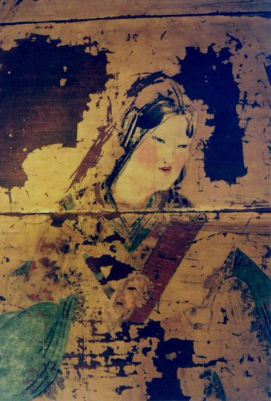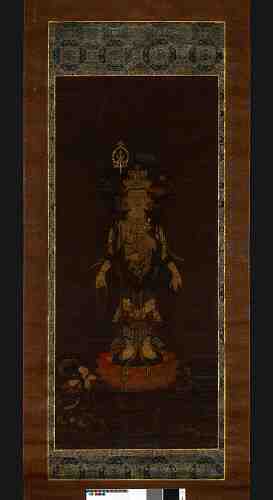Ninth Century Japanese Art: Kose Kanaoka and the Cultural Richness of the Middle Kingdom
Lee Jay Walker
Modern Tokyo Times

A great deal of information isn’t forthcoming in the English-speaking world when it comes to Kose Kanaoka. Indeed, even conjecture remains about the art he produced. This is based on the last known surviving art piece – that was documented – being destroyed by fire in the seventeenth century. Therefore, the legacy of Kose Kanaoka is based on the Kose School of Art that is named after him along with art pieces being attributed to him by other artists paying homage.
Hence, it is the name Kose that binds much to the knowledge and legacy of the ninth century artist called Kose Kanaoka. Therefore, his legacy is assured because of the Kose School of Art, he made the first Japanese tonal gradation, powerful patronages, and Kose Kanaoka created the first Japanese crayon style of the holy Buddha.
Of course, the power of the Middle Kingdom (China) in this period of Japanese history entails that Kose Kanaoka adored the artistic nature of the Tang Dynasty. In other words, Kose Kanaoka – like a host of other famous Japanese artists -benefited greatly from the cultural richness of the Middle Kingdom.

In another art piece, I state, “Unlike other leading Japanese art schools, the beauty of the Kose School (image above belongs to the Kose School) is that no single style represents this group of artists. Indeed, Kose Kanaoka had a free and inquisitive spirit despite the natural reality of stratification and piety that embodied many areas of his life. After all, the trappings of court artists must have been immense and the same applies to the growing entrenchment of Buddhism.”
His powerful patrons who supported him witness the importance of Kose Kanaoka. This notably applies to Emperor Uda (867-931) and Mototsune Fujiwara. Hence, the power of the Imperial Court, Buddhism, Confucianism, and the richness of the Middle Kingdom all impacted on Kose Kanaoka.

I also report in a past article, “It is known that Kose Kanaoka focused on animals, official portraits, and landscapes. Equally important, the richness of Kose Kanaoka and his pupils enabled the yamato-e style to emerge. Also, the Tosa School of art can be linked to the Kose School based on Kinmochi, a student of Kose Kanaoka, teaching Motomitsu Kasuga.”
Overall, while conjecture remains in the English-speaking world about many areas of the life of Kose Kanaoka, his legacy is assured because of the factors already mentioned. Therefore, it is hoped that people will seek further knowledge about this extremely influential artist and the same applies to the Kose School of Art.

Modern Tokyo News is part of the Modern Tokyo Times group
DONATIONS to SUPPORT MODERN TOKYO TIMES – please pay PayPal and DONATE to sawakoart@gmail.com
http://moderntokyotimes.com Modern Tokyo Times – International News and Japan News
http://sawakoart.com – Sawako Utsumi personal website and Modern Tokyo Times artist
https://moderntokyonews.com Modern Tokyo News – Tokyo News and International News
http://global-security-news.com Global Security News – Geopolitics and Terrorism
PLEASE JOIN ON TWITTER
https://twitter.com/MTT_News Modern Tokyo Times
PLEASE JOIN ON FACEBOOK